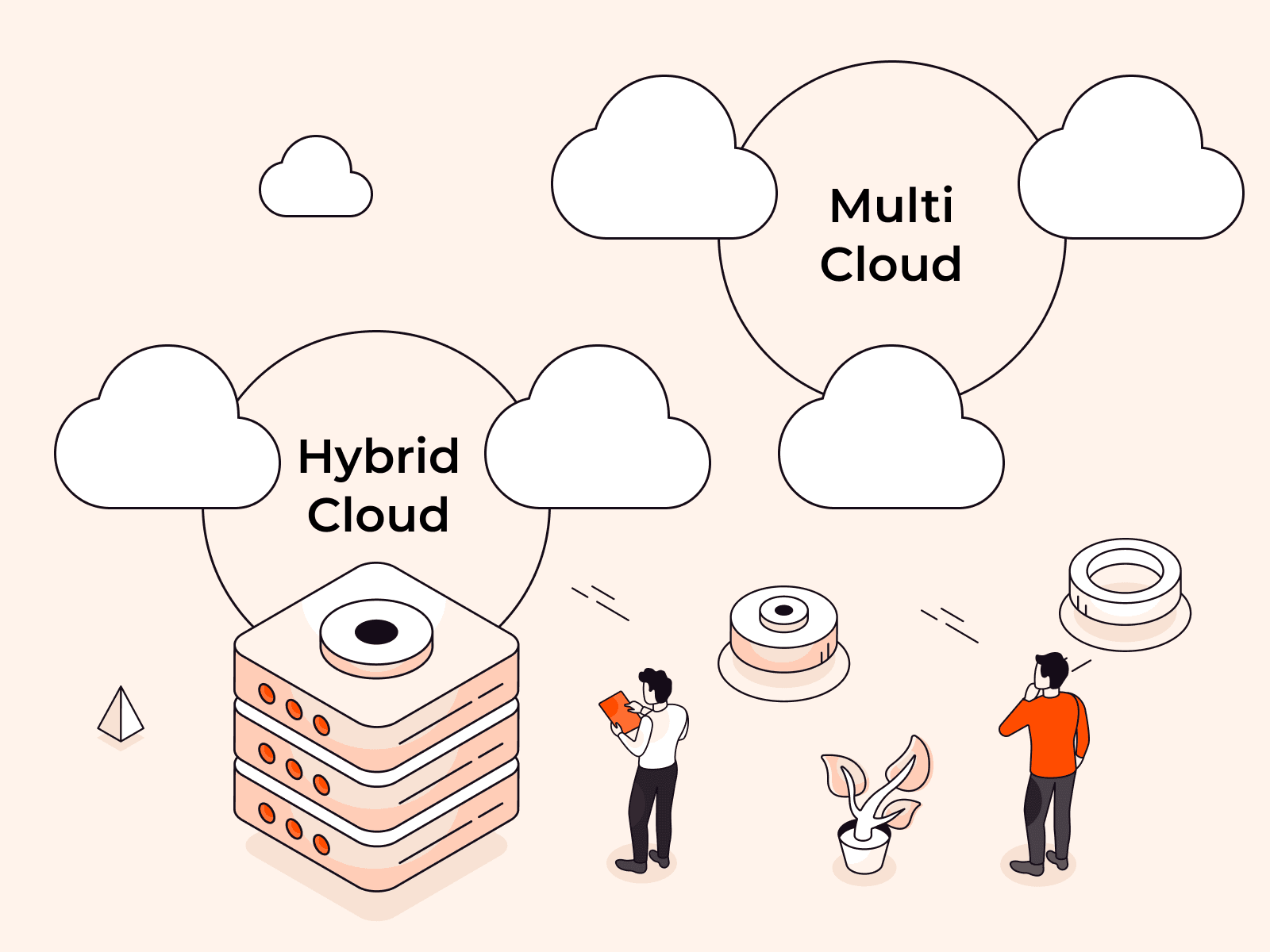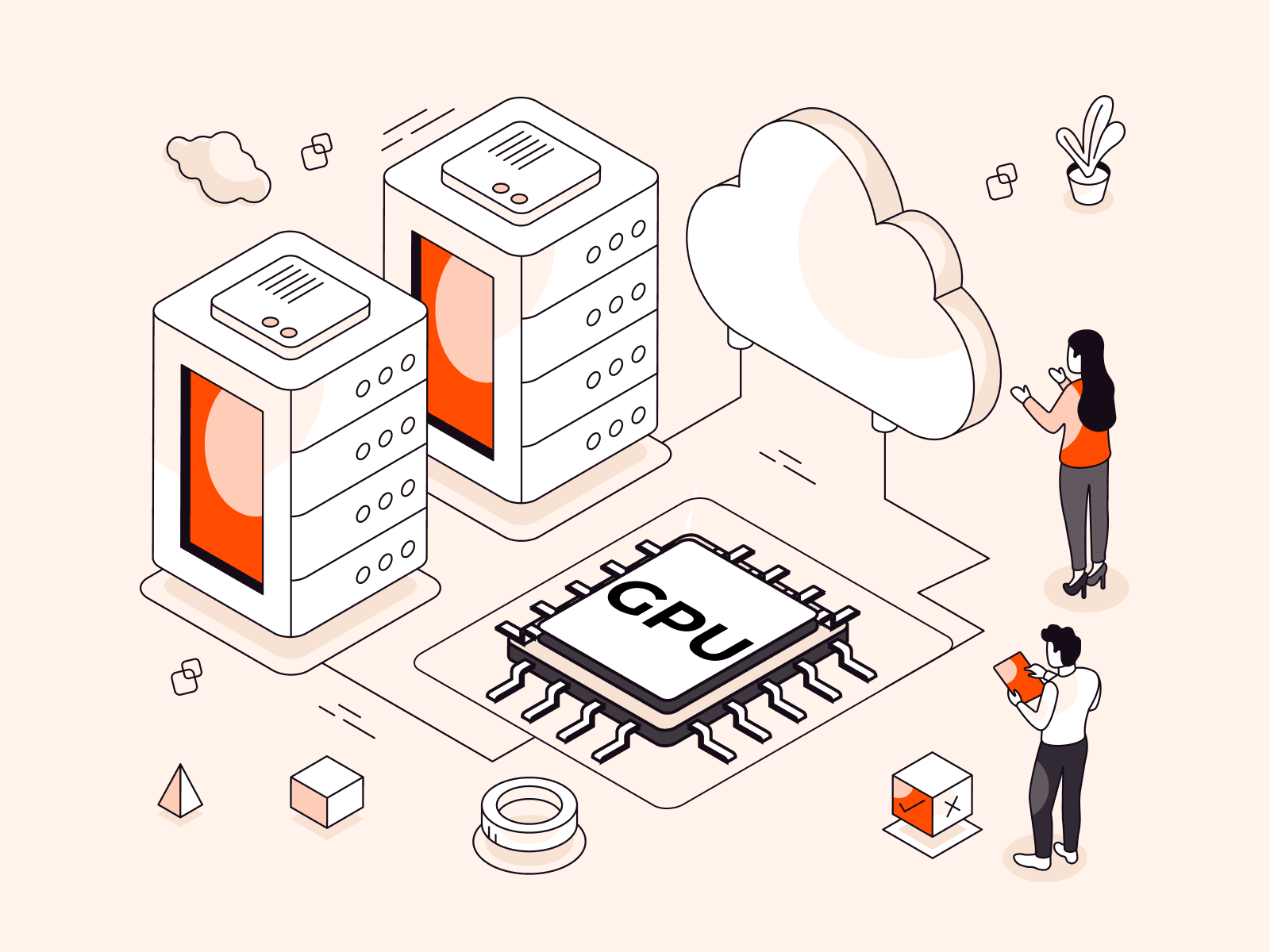Object storage is a data storage architecture that manages data as discrete units called objects, each containing the data itself, metadata, and a unique identifier. Unlike traditional storage methods, object storage systems can scale to exabyte-scale capacity by adding storage nodes, supporting massive unstructured data growth.
Object storage operates through a flat address space without hierarchical file systems, where each object is stored in a flat data environment and accessed directly via its unique identifier. This architecture eliminates the need for directory structures and enables multiple access paths to the same data.
The OSD standard specifies 64-bit identifiers for partitions and objects, creating a vast address space for object storage systems.
The storage approach differs especially from file storage, which organizes data hierarchically in folders, and block storage, which breaks data into blocks with unique addresses. Object storage's flat structure allows for more flexible data organization and retrieval patterns. Each storage method serves different use cases based on how applications need to access and manage data.
Object storage systems provide several key advantages, including automatic data distribution across multiple storage nodes for high durability and availability.
These systems typically maintain a replication factor of three or more copies of each object across different nodes. The metadata in object storage is extensible and user-definable, allowing rich descriptive information to be stored alongside data, which supports advanced data management and analytics capabilities.
This storage architecture has become essential for modern applications dealing with large amounts of unstructured data, from backup and archival systems to content distribution and big data analytics platforms.
What is object storage?
Object storage is a data storage architecture that manages data as discrete units called objects, each containing the data itself, metadata, and a unique identifier. Unlike file storage systems that organize data in hierarchical folders or block storage that splits data into addressed blocks, object storage uses a flat address space where each object can be accessed directly through its unique ID. This approach eliminates directory structures and enables multiple access paths to the same data, making it ideal for storing and retrieving large amounts of unstructured data like photos, videos, documents, and web content.
The architecture stores objects across multiple storage nodes with automatic replication to ensure high durability and availability.
Each object includes rich, user-definable metadata that provides detailed information about the stored data, supporting advanced search capabilities and data management workflows. Object storage systems can scale to exabytes of capacity simply by adding more storage nodes, making them perfect for organizations dealing with massive data growth. The flat namespace design means there's no performance degradation as storage volumes increase, unlike traditional hierarchical file systems that can slow down with deep directory structures.
How does object storage work?
Object storage works by managing data as discrete units called objects, where each object contains the actual data, descriptive metadata, and a unique identifier for direct access. Unlike traditional file systems that organize data in hierarchical folders, object storage uses a flat address space where every object can be retrieved directly using its unique ID, eliminating the need for complex directory structures.
The system stores each object across multiple storage nodes to ensure high availability and durability. When you upload data, the object storage system automatically creates copies (typically three or more) and distributes them across different nodes in the storage cluster.
This replication protects against hardware failures and ensures your data remains accessible even if individual nodes go offline.
Each object includes rich, extensible metadata that you can customize to store descriptive information about your data. This metadata enables powerful search capabilities and automated data management policies. For example, you might store creation dates, content types, access permissions, or business-specific tags that help organize and retrieve data later.
Object storage excels at handling unstructured data like photos, videos, documents, and sensor data.
The flat namespace design allows systems to scale to exabyte-level capacity by simply adding more storage nodes. You access objects through RESTful APIs using standard HTTP methods, making it easy to combine with web applications and cloud services. This architecture delivers cost-effective storage with high durability while simplifying data management compared to traditional storage approaches.
How does object storage compare to file storage and block storage?
Object storage differs from file storage and block storage by using a predominantly different architecture. It stores data as discrete objects with metadata and unique identifiers in a flat namespace rather than hierarchical directories or fixed-size blocks.
Storage architecture differences
File storage organizes data in a hierarchical structure with folders and subfolders, similar to your computer's file system. You access files through specific paths like `/folder/subfolder/file.txt`. Block storage breaks data into fixed-size chunks (blocks) that get stored across multiple locations, with each block having a unique address.
Applications reassemble these blocks when accessing data.
Object storage eliminates both approaches. It stores each piece of data as a complete object containing the actual data, rich metadata, and a globally unique identifier. These objects live in a flat address space called buckets or containers, with no directory structure to navigate.
Flexibility and performance
Object storage scales to exabyte levels by simply adding more storage nodes to the cluster.
The flat namespace means you don't hit the performance bottlenecks that hierarchical file systems face with millions of files in directories. Block storage scales well but requires more complex management as you add storage volumes.
File storage performance degrades as directory structures grow deep and wide. Object storage maintains consistent performance because it accesses data directly through unique identifiers rather than traversing directory trees.
Data access methods
You access object storage through REST APIs using HTTP methods (GET. PUT. DELETE), making it perfect for web applications and cloud services.
File storage uses traditional file system protocols like NFS or SMB. Block storage requires mounting as volumes to operating systems, then formatting with file systems.
This API-based access makes object storage ideal for applications that need to store and retrieve unstructured data, such as images, videos, backups, and documents, from anywhere on the Internet.
Cost and use cases
Object storage typically costs $0.01 to $0.02 per GB per month, making it the most economical option for large-scale data storage. Block storage costs more due to higher performance requirements, while file storage falls somewhere between.
Object storage works best for backup and archiving, content distribution, big data analytics, and storing static web content.
Block storage suits databases and applications requiring low-latency access. File storage fits traditional applications needing shared file access across multiple users or systems.
What are the key benefits of object storage?
The key benefits of object storage refer to the advantages organizations gain from using this data storage architecture that manages information as discrete units with metadata and unique identifiers. The key benefits of object storage are listed below.
- Massive flexibility: Object storage systems can scale to exabytes of data by simply adding storage nodes to the cluster. This horizontal growing approach supports the explosive growth of unstructured data without requiring complex restructuring of the storage architecture.
- High durability and availability: Object storage systems automatically replicate data across multiple nodes, typically maintaining three or more copies of each object. This replication provides extremely high durability rates, with leading services offering 99.999999999% (11 nines) durability, meaning virtually no risk of data loss.
- Cost effectiveness: Cloud object storage typically costs $0.01 to $0.02 per GB per month, making it highly cost-effective for storing large volumes of data. The flat pricing model and elimination of complex directory structures reduce both storage and management costs.
- Rich metadata support: Each object can store wide, user-definable metadata alongside the actual data, enabling advanced search, classification, and analytics capabilities. This metadata richness supports automated data management policies and intelligent data processing workflows.
- Simplified data management: The flat namespace eliminates complex directory hierarchies, making data organization and retrieval more straightforward. Objects are accessed directly via unique identifiers, reducing the complexity of data location and management tasks.
- Global accessibility: Object storage provides multiple access methods, including REST APIs, making data accessible from anywhere with proper authentication. This accessibility supports distributed applications and remote data access scenarios across different geographic locations.
What are common object storage use cases?
Object storage use cases refer to specific applications and scenarios in which organizations use object storage systems to manage unstructured data at scale. The use cases are listed below.
- Backup and archiving: Object storage provides cost-effective long-term data retention with high durability guarantees. Organizations can store backup copies of critical data with automated replication across multiple locations, ensuring data protection against hardware failures or disasters.
- Content distribution: Media companies and websites use object storage to serve static content like images, videos, and documents to global audiences. The flat namespace structure allows effective content delivery without complex directory management.
- Big data analytics: Data scientists store massive datasets in object storage for processing by analytics platforms and machine learning algorithms. The rich metadata capabilities enable easy data discovery and organization for analytical workloads.
- Cloud-native applications: Modern applications built for cloud environments use object storage to handle user-generated content, application logs, and temporary files. The flexible architecture supports applications that need to grow storage capacity flexibly.
- Disaster recovery: Organizations replicate critical data to object storage systems in different geographic locations as part of their disaster recovery plan. The automatic replication features ensure data remains accessible even during major outages.
- IoT data storage: Internet of Things devices generate continuous streams of sensor data that object storage systems can ingest and store effectively. The ability to handle millions of small files makes it ideal for IoT applications.
- Medical imaging: Healthcare organizations store large medical images like MRIs, CT scans, and X-rays in object storage systems. The metadata capabilities allow medical professionals to tag and search images based on patient information and diagnostic data.
What are data lakes, and how do they relate to object storage?
A data lake is a centralized repository that stores vast amounts of raw data in its native format until it's needed for analysis or processing. Data lakes can store structured, semi-structured, and unstructured data from multiple sources without requiring a predefined schema, making them highly flexible for organizations dealing with diverse data types. This approach allows companies to capture and store all their data first, then determine how to process and analyze it later based on specific business needs.
Object storage serves as the foundational technology that makes data lakes possible and flexible. Object storage manages data as discrete units called objects, each containing the data itself, metadata, and a unique identifier, stored in a flat address space without hierarchical directory structures. This architecture perfectly supports data lake requirements because it can handle massive volumes of unstructured data like log files, sensor data, images, and videos that don't fit well into traditional databases.
The relationship between data lakes and object storage is complementary. Object storage provides the underlying infrastructure while data lakes represent the architectural approach to data management. Object storage systems can scale to exabytes of data by adding storage nodes, supporting the massive unstructured data growth that data lakes are designed to accommodate. The rich metadata capabilities of object storage also enable data lakes to maintain detailed information about stored data, making it easier to catalog, search, and govern large datasets across the organization.
How to choose the right object storage solution
You choose the right object storage solution by evaluating your data requirements, performance needs, flexibility demands, security requirements, and cost considerations across different use options.
First, assess your data volume and growth projections over the next 2-3 years. Calculate your current unstructured data size, including videos, images, documents, and backups, then add a 30-40% buffer for unexpected growth to avoid frequent migrations.
Next, determine your access patterns and performance requirements. Hot data that you access frequently needs low-latency retrieval, while cold archival data can tolerate slower access times in exchange for lower storage costs.
Then, evaluate your flexibility needs based on whether you expect gradual growth or sudden spikes in data volume. Look for solutions that can scale to exabyte-level capacity without requiring major infrastructure changes or performance degradation.
Compare use models between cloud-based, on-premises, and hybrid solutions. Cloud object storage typically costs $.
Examine security and compliance features, including encryption at rest and in transit, access controls, audit logging, and regulatory compliance certifications. Verify that the solution meets your industry requirements, such as HIPAA for healthcare or GDPR for European data.
Test API compatibility and combination capabilities with your existing applications and workflows. Most solutions support S3-compatible APIs, but verify performance and feature parity for your specific use cases.
Finally, analyze the total cost of ownership, including storage fees, data transfer charges, API request costs, and any additional features like cross-region replication or advanced analytics capabilities.
Start with a proof-of-concept using a small dataset to validate performance, costs, and combinations before committing to full-scale use.
Gcore object storage solutions
When choosing an object storage solution for your organization, the technical requirements we've discussed (flexibility, durability, and performance) must translate into real-world infrastructure capabilities. Gcore Object Storage delivers on these fundamentals with S3-compatible APIs, automatic data replication across multiple nodes, and cooperation to handle growing data volumes without the complexity of traditional storage hierarchies.
What sets Gcore apart is the combination of enterprise-grade reliability with cost-effective pricing, offering the 99.999999999% durability you need for critical unstructured data while maintaining competitive per-GB rates. The platform's global edge locations ensure low-latency access to your objects worldwide, whether you're serving static web content, managing backup archives, or supporting big data analytics workflows.
Explore how Gcore Object Storage can simplify your data management plan.
Frequently asked questions
What's the difference between object storage and blob storage?
There's no difference - "blob storage" and "object storage" are two names for the same technology. Blob (Binary Large Object) is simply Microsoft's terminology for what the industry calls object storage, where data is stored as discrete units with metadata and unique identifiers in a flat namespace rather than hierarchical folders.
How much does object storage cost compared to other storage types?
Object storage costs 50-70% less than traditional file or block storage, with cloud pricing around $0.01-$0.02 per GB monthly compared to $0.05-$0.10 for high-performance alternatives.
Can object storage replace all my other storage needs?
No, object storage can't replace all your storage needs because it's designed specifically for unstructured data and lacks the performance characteristics required for databases, operating systems, and applications that need low-latency block-level access.
Object storage excels at storing photos, videos, backups, and static web content. However, you'll still need block storage for virtual machines and databases, plus file storage for shared network drives and collaborative workspaces.
What is S3 compatibility and why does it matter?
S3 compatibility means storage systems can use Amazon S3's API commands and protocols, allowing applications built for S3 to work with other storage providers without code changes. This matters because it prevents vendor lock-in and lets organizations switch between storage providers while keeping their existing applications, tools, and workflows intact.
Is object storage secure for sensitive data?
Yes, object storage is highly secure for sensitive data through multiple layers of protection, including encryption at rest and in transit, access controls, and data replication across geographically distributed nodes. Enterprise object storage systems typically offer 99.999999999% (11 nines) durability and support compliance frameworks like SOC 2, HIPAA, and GDPR for regulated industries.
Related articles
Subscribe to our newsletter
Get the latest industry trends, exclusive insights, and Gcore updates delivered straight to your inbox.






